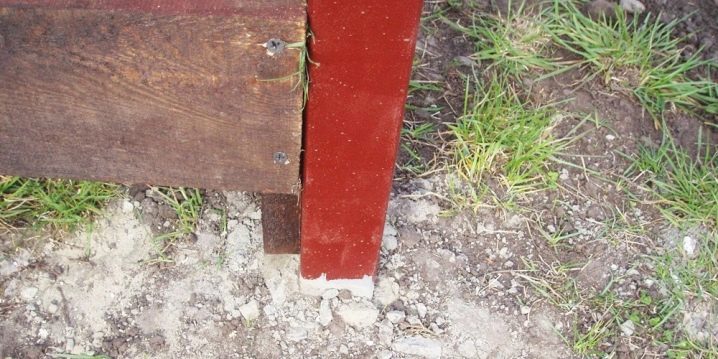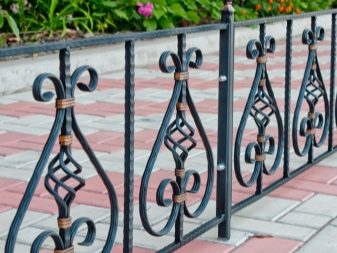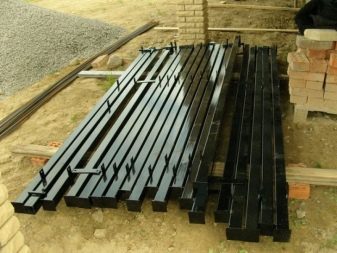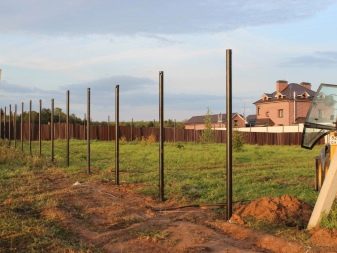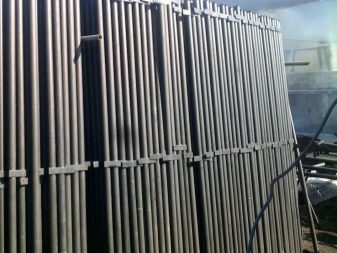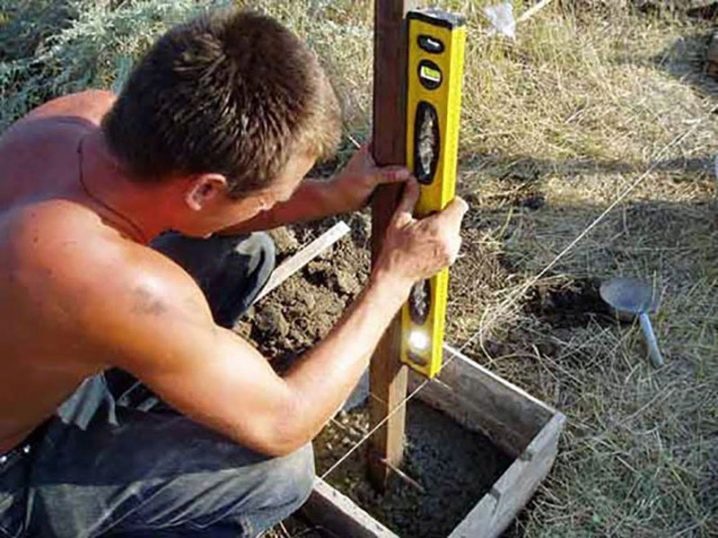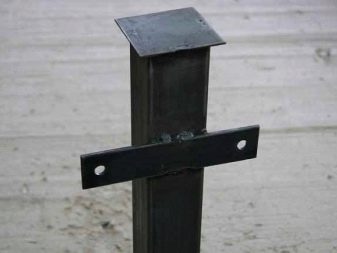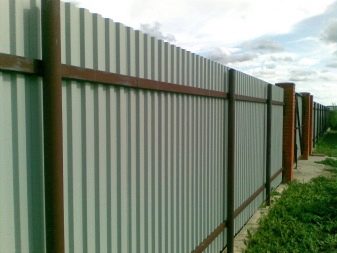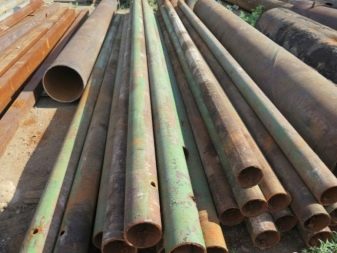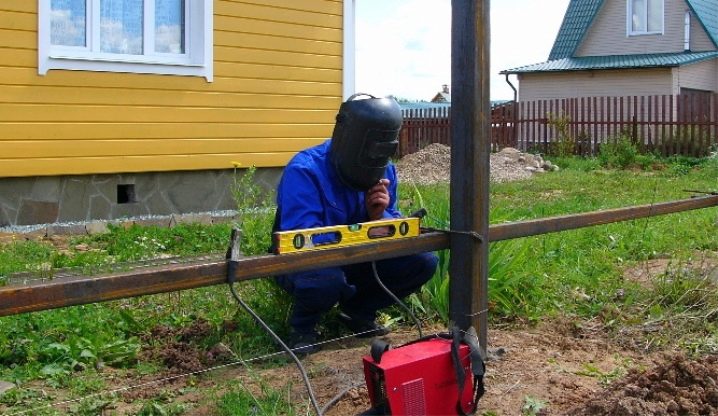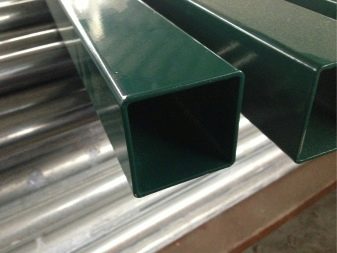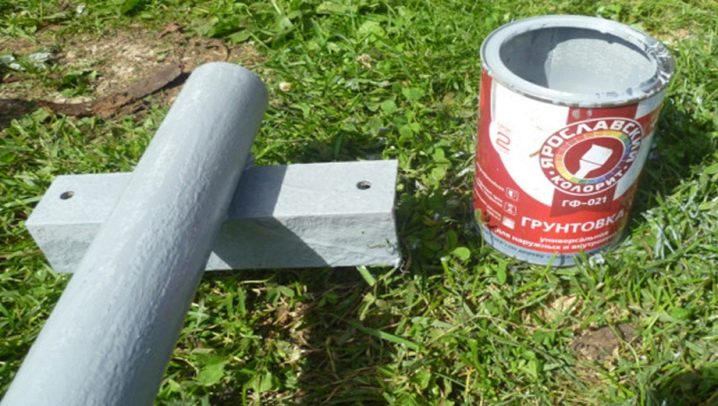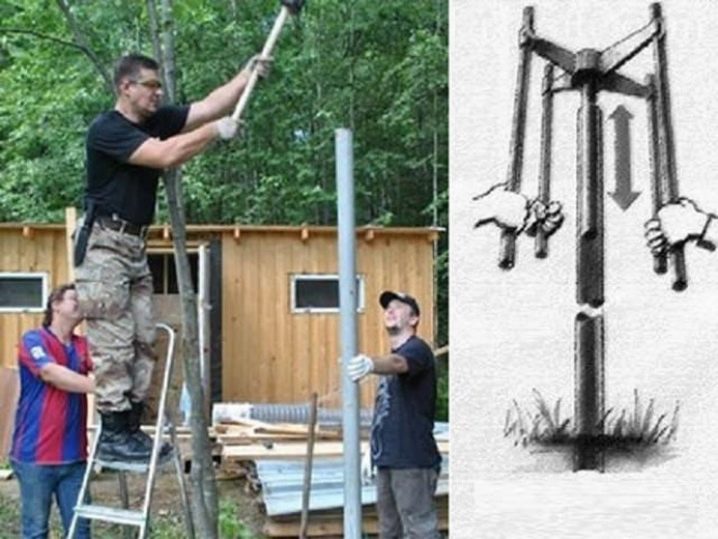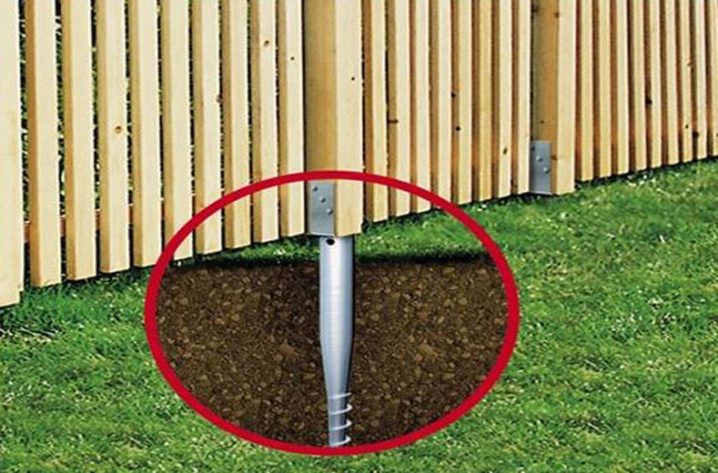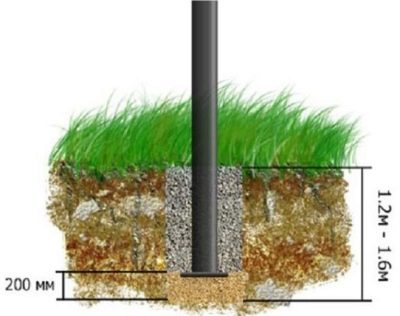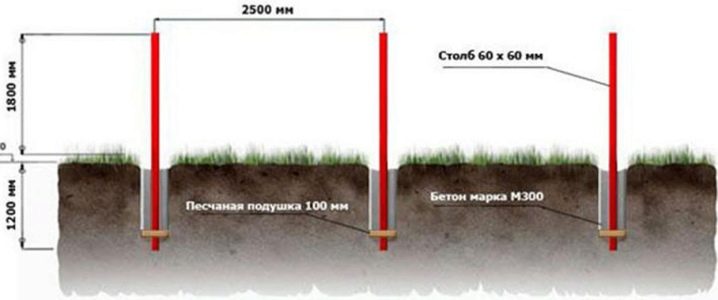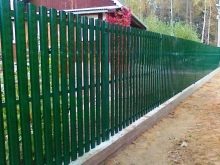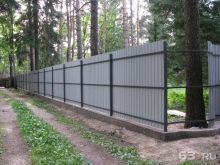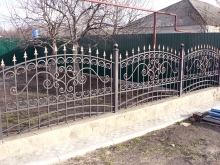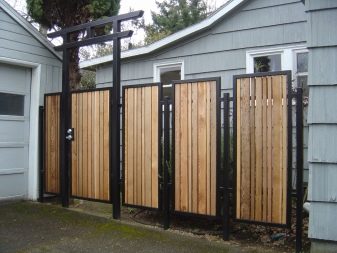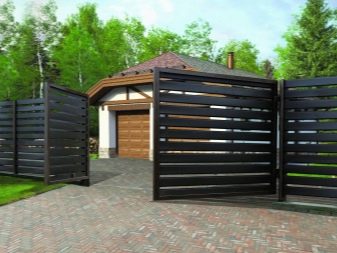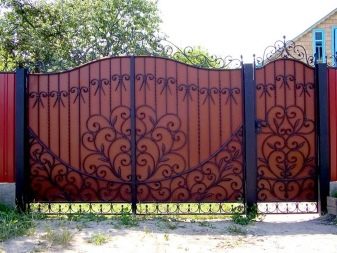Metal poles for the fence: features and installation
Fences surround houses, shops, offices. They can be different in design, height and purpose. But they all serve to perform the same functions - designation of the boundaries of the site, protection from the environment, separation of space and providing a zone of psychological comfort. All this cannot be done without such an important part of the fence as its supports. The most versatile among them are metal. About them will be discussed further.
Characteristic
All supports must have the following properties:
- Strength. As a matter of fact, it is on them that the whole load falls, which the fence experiences from weather phenomena, the actions of people and animals.
- Sustainability. In addition to external influences, they must withstand the weight of the structures attached to them.
- Versatility.Since intake spans may vary in appearance and material of manufacture, the pillars must withstand all types of them.
In addition to the fact that metal poles meet all the above requirements - that is, they are strong enough, stable and suitable for different types of fences in terms of technical characteristics and style, they have another important advantage - they have a sufficiently long service life, during which they do not require large investments in repair and restoration. We can say that such an acquisition is really profitable, since the ratio of their price and quality is optimal.
Among the shortcomings can be noted the complexity of installation for people who do not have the skills and experience in this field. In order for the entire structure to be installed correctly and problems didn’t arise during operation, it is necessary to resort to the services of a specialist.
Kinds
A modern pillar is a hollow inside pipe, the end (section) of which has the shape:
- Round. Have the most affordable price. Ignorant people in this question may have a question about how to attach a fence to a rather sloping side.To this end, stabilizing parts in the form of plates are welded to it. In addition, they require plugs that will prevent the ingress of moisture inside.
- Square or rectangular. They are most convenient to use and are suitable for completely different materials. In addition, another advantage of this form are design features in the form of additional ribs. This increases their cost and, more importantly, reliability.
The thickness of the metal also varies. The most popular options are from 2 to 4 mm. Pipes are available in lengths from 2.5 to 6 meters. Non-standard is made by cutting the product to the height you need. The length of the product that you need is equal to the sum of the height of the fence and the depth of freezing of the ground with an increase of 15-20 cm. If you can not find this indicator, please note that there must be at least a third of the entire length underground.
The diameter of the pipes varies from 5 to 10 cm. To choose the correct thickness of the pipe, it is necessary to measure the estimated distance between two adjacent columns and calculate the mass of material consumed for each span.
If there are no funds for the purchase of special pipes, you can use any other suitable ones, even used ones (for example, from the water supply and heating systems). The main thing is that they are in good condition and resistant to corrosion.
In appearance the pipes can be:
- Untreated. In addition to an unaesthetic appearance, the surface may oxidize under the influence of oxygen and water or react with the chemical elements contained in the soil.
- Coated. On the production surface of the future metal pillars coated with polymers or zinc (there are models with both types of protection). Such measures effectively protect against corrosion. Immediately before installing the support can be treated with bitumen or mastic, designed specifically for metals.
Enamels or varnishes are used for decoration. To date, their choice is huge - they can be ordinary or combine the functions of a primer (which greatly facilitates the process of painting). In addition to creating an image suitable to the general style of the house, such paints will significantly prolong the life of the fence. Special attention needs to be paid machining of welds. They should be painted over especially carefully.
Installation
Before installation, it is necessary to make calculations of the required amount of material and draw up a diagram of their rational location.In accordance with building codes, the optimum span is not more than 2.5 meters.
As the main methods of installation of metal supports for the fence, driving, screwing, blocking, and concreting are used.
The choice of one or another option depends on the state of the soil and the total weight of all materials of the fence.
If the fencing system is light and the ground is sandy, the pillar can be driven in with a sledge hammer or other technical means. This option is suitable for temporary structures, as it is easier to dismantle. The process itself takes place as follows: first, a pillar is placed in a small depression (in accordance with the marking) and they begin to strike, periodically checking the correctness of its position.
Wherein you can not just beat on the top. So that it does not deform, use special tools. It is better if there is someone else present who could control the slightest deviations from the vertical. It depends on this not only how the fence will look, but also the possibility of its proper installation in general. A deviation of a few degrees can make the installation of other parts impossible.
Threaded posts or blades can be screwed in if the ground allows.In this case, it will not be easy to remove them, so the building must be long-term.
If the ground is crumbling, the problem will be solved. booty. Gravel, broken bricks, sand, or other suitable building materials fall asleep in a well wide enough for tamping. Reduce the cost of the process can use construction debris. Such a layer should be at least 15 cm. A pole is installed on this base and leveled. Each subsequent layer must be carefully tamped and watered. You can alternate the materials in layers. The last 15 cm concreted.
Full concreting is suitable in cases where large loads are assumed (the weight of the materials is quite large and the soil is unstable, prone to swelling). The width of the pit should be greater than the diameter of the column by 15-20 cm. Rubble is poured into it and tamped. Then make a formwork of wood and poured concrete. A week later, the formwork is removed. If they make the foundation for the fence, the pillars are installed when it is poured.
Sometimes a mixed method is used. Its essence lies in the fact that the hole is drilled only at half the intended depth. The pole is driven in to the mark, after which the building material is poured, a formwork is constructed and concrete is poured from above.
Selection rules
Focusing on the appearance of the fence, the pillars can be chosen in such a way that they hardly stand out against the general background. This also contributes to painting the entire system of fencing in one color.
In addition, they can be completely hidden from the eyes of passersby behind the professional flooring, so popular nowadays, which they perfectly complement and provide the entire structure with reliability.
Another option in which a large load rests on the supports is a fence with forged parts. In this case, it is important to maintain for the whole ensemble one style of execution and decoration.
The use of metal pillars does not imply that the fence itself should be made of the same material. Looks particularly impressive contrast of metal frame and wooden sections. Making out the territory of a country house in the style of a ranch, it is sometimes worth replacing wood with a more reliable metal. This does not worsen its appearance, but it will increase the service life.
Most often they are placed at the gate and gates, that is, in places of the greatest load. In this case, their shape may be more intricate, and the tops are decorated with curly details.
In case the fence performs a more decorative function than the protective one, the requirements for small posts remain the same. The whole design must be safe and at the same time beautiful and elegant, especially if we are talking about the fencing of a building with an attractive facade.
For information on how to install fences on drive-in supports, see the following video.
